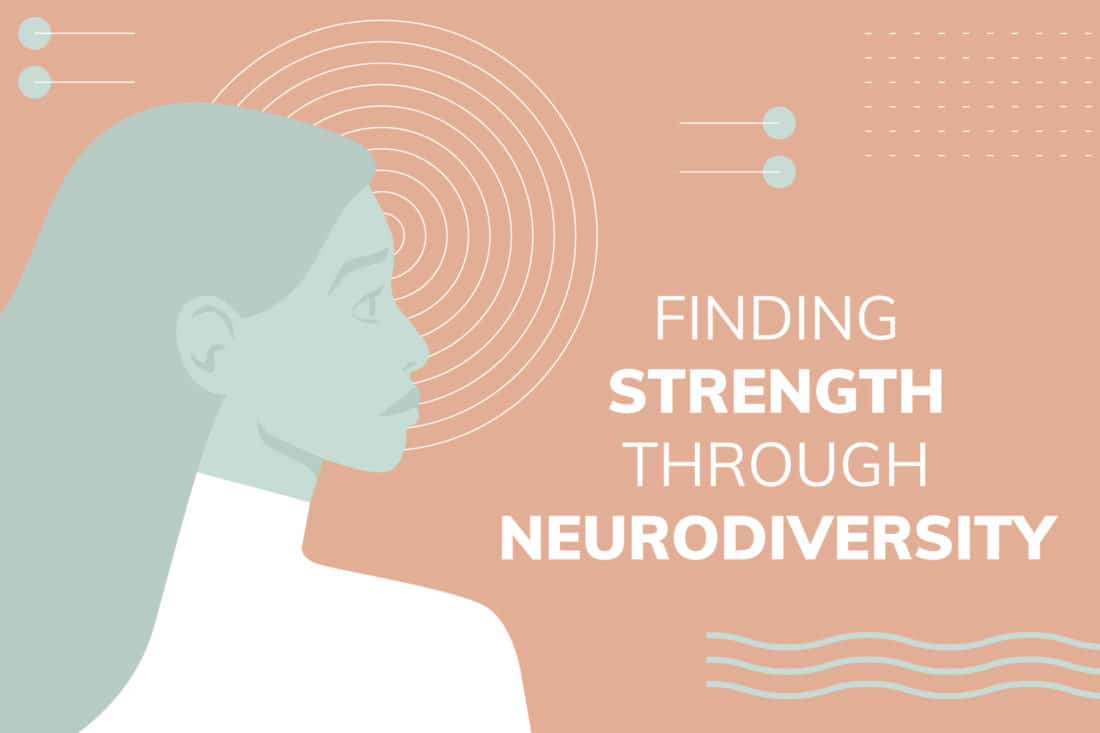
Finding Strength Through Neurodiversity
I am a dyslexic thinker and proud of it.
Dyslexia, until late, was referenced as a disorder. I much prefer the term neurodiversity.
I love people. I also love reading, storytelling, and looking at the world creatively. I am terrible at math—I haven’t used long division since sixth grade. It took me a long time, but I’ve learned to accept the things that make me neurodiverse and turn them into my greatest strengths.
Growing Up Neurodiverse
In first grade, I didn’t write on the lines but between them. That habit landed me in a “special” class during recess since I was not doing it right—every kid’s worst nightmare. This was my first memory that highlighted how I thought differently than my peers.
There wasn’t a name for neurodiversity and how to address it when I was young. It was hard to feel confident in myself when I got made fun of, when I had trouble reading out loud or when I had to forgo fun time to sit and read with my teachers. Math was also extremely difficult. Since my teachers weren’t aware of my neurodiversity, I didn’t have the right tools to do my work well. I was always doing things in my own way to get the work done.
While my Mom was never diagnosed with dyslexia, she definitely has some tendencies. Our family history with this became more evident when my brother was diagnosed with both auditory and visual dyslexia. Once he began to learn in new ways, it opened the door for me to understand my mind better, though I still struggled.
As I went through grade school, middle school, and high school (proud public school student!), dyslexia was becoming a thing that people were getting tested for. Mine slipped under the radar for the most part, and I was embarrassed that I saw numbers backward and had difficulty reading aloud or pronouncing words that I knew. The stigma of having “something wrong with me” traveled from school to college and into adulthood.
Challenges in Adulthood
By the process of elimination, I knew at the age of 16 that my future was in communications, where I could bring my strengths into a career and not have to encounter the things I found more difficult, like math. Unfortunately, communications and public relations are often not kind to those who traditionally think differently. During one role, I mentioned to a manager that I was dyslexic, and the response, instead of asking how to best work with me to manage this different way of thinking, was to ask why I went into a role in writing and communications. It was tough to hear something like this in the workplace, but instead of letting it get me down, I eventually shifted to being fully transparent about my neurodiversity and brought it up during job interviews.
It all began to change for me when I worked for nonprofit Village Enterprise and transitioned my way to Media Cause – I was super transparent about my neurodiversity. It allowed me to feel less like an outsider for my so-called ‘disability’ and instead think about how those differences make me a great worker.
Becoming My Best Self
I’ve also come to discover that there’s a link between creativity and dyslexia. Many creatives, artists, and musicians have it and have found a way to navigate and create beautiful work. For me, it’s given me better visual and spatial skills, which lends itself well to my photography hobby. I can see the beauty in the world and frame it in a way that captures it just right, and I also feel confident in editing and selecting the best shots–a skill I honed as a talent publicist at the beginning of my career.
I am able to see a big, holistic picture due to my neurdiversity. Rather than focus on minute details or getting stuck, my creativity flourishes. I know what the common thread is for a plan, even if pulling it together can be a little bit harder. This is where being transparent in the workplace can be a great way to manage and play off of my abilities. I can offer my strengths and work with teammates who can balance where I may not be as skilled. I also know that some things may take more time and editing to get right for me, but I always have the ideas there. Ensuring my team knows that this is my way of thinking helps set better expectations and understanding.
Getting Rid of the Stigma Around Neurodiversity
Let me be loud and clear, being dyslexic or neurodiverse does not have to be a stigma or a reason for someone not to hire you. Neurodivergents see the world differently—and trust me, you want us on your team. It has been entirely archaic thinking in marketing, public relations, and communications that those who are neurodivergent cannot be good with words or at the job at hand.
I challenge you to think about those you work with and what they have to offer in a different light. Know that working with or being neurodivergent shouldn’t prohibit you at all. And don’t be afraid to talk about it, especially at work. You never know who may feel the same way, and it will make it extremely helpful for your peers to understand that you think a little bit differently— it might even help them to see the world differently.
It’s a different way of thinking—not a hindrance. In an ever-evolving world, we should celebrate diversity and think about how much we have to learn from others who act, live, or think differently.